What is Vegetative Propagation
Vegetative propagation is a type of asexual reproduction in which new plants are reproduced from vegetative parts like the root, stem or leaves of the parent plant. It means no specialized reproductive organs are involved in vegetative propagation.
Vegetative propagation fundamentally involves growth and development of dormant buds present in vegetative parts of plant. These buds may develop on all vegetative parts of plants like root, stem and leaves.
Also Check -Why is Vegetative Propagation Practiced for growing some types of Plants
Examples of Vegetative Propagation
Vegetative propagation by Roots of Dahlia and Sweet Potato
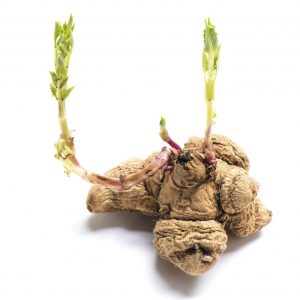
Vegetative Propagation by Rhizome in Ginger

Vegetative Propagation by Tuber in Potato

Vegetative Propagation by Bulb in Onion
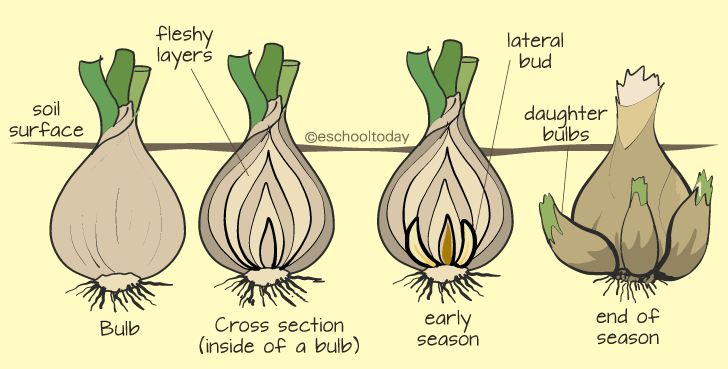
Vegetative Propagation by Corm Gladiolus, crocus, and crocosmia
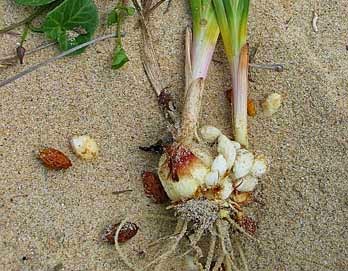
Vegetative Propagation by Stolon
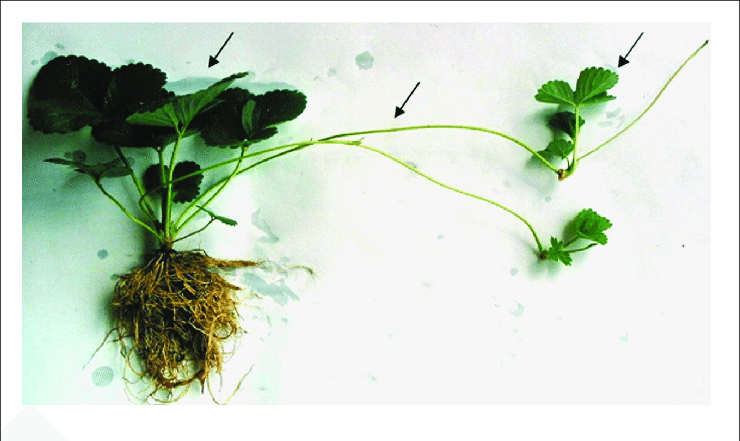
Vegetative Propagation by Sucker in Chrysanthemums
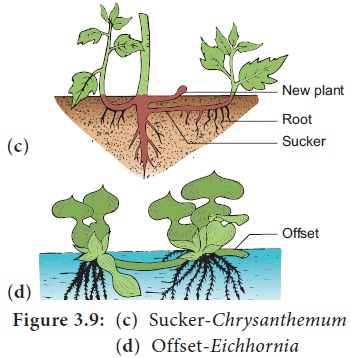
Vegetative Propagation by Runners in Strawberry
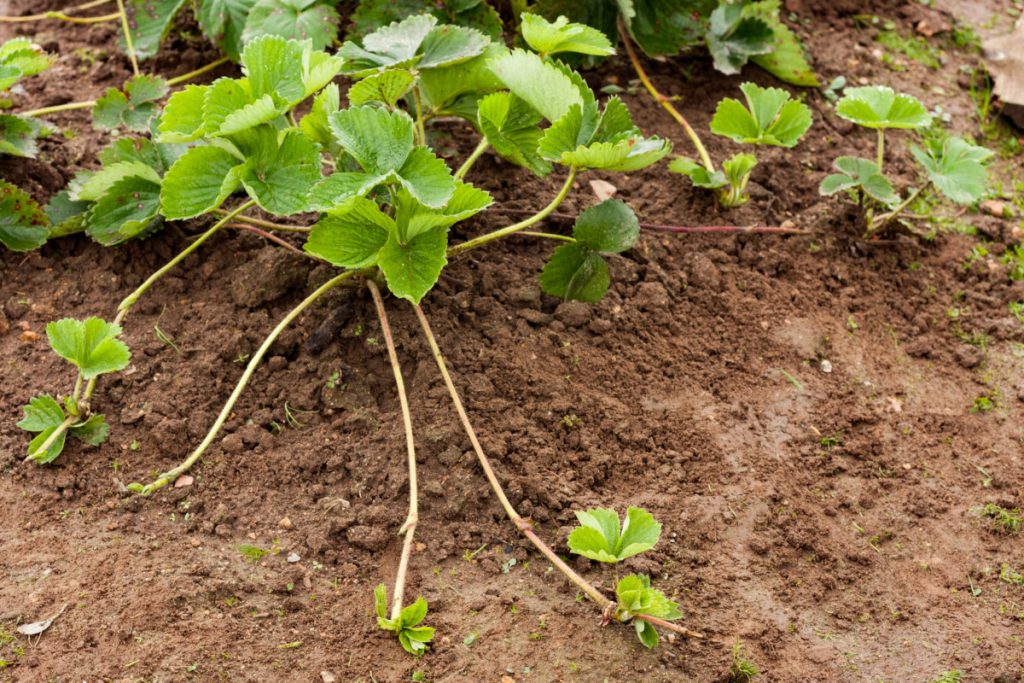
Types of Vegetative Propogation
There are two types of vegetative propagation
Natural Vegetative Propagation
Under favorable conditions, various structures like roots, stem and leaves take part in vegetative propagation reproduction. This Is known as natural vegetative propagation, where plant parts like root, stem and leaves develop into new plants.
Artificial Vegetative Propagation
The property of vegetative propagation is used in cutting, layering and grafting. These are known methods of artificial vegetative propagation. They are used for many plants like sugarcane, roses, grapes etc., by farmers.
Types of Artificial vegetative propagation
Cutting
–In this method, stems are cut into pieces and planted into soil .This is the easiest and most frequently used method of artificial propagating plants, Eg. · Sugarcane, grapes, rose etc.
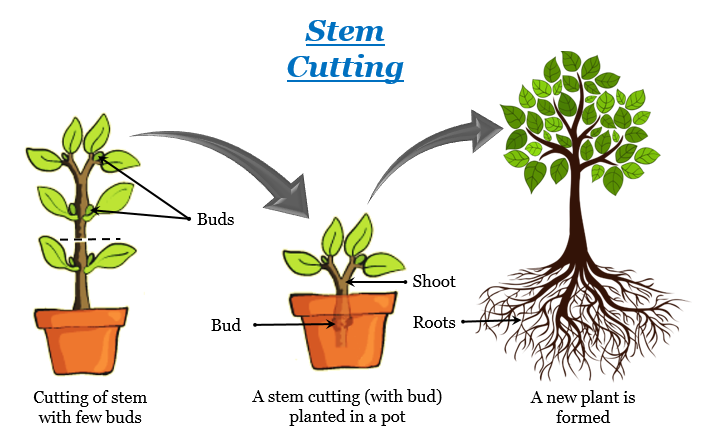
Layering
Here, an intact branch is bent into the soil and is covered with moist soil. The growing tip remains above the soil. When roots arise in the branch region in contact with soil, it is separated from the parent plant. Within a few weeks, a new plant can be propagated by this method. Eg. – Cherry, jasmine and grapevine
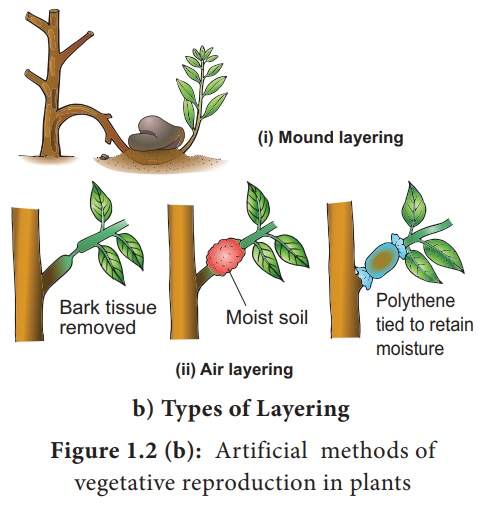
Grafting
Here a detached part of one plant called scion, is inserted into the stem of a rooted plant called stock. Scion is a short piece of detached shoot containing several buds. Stock is the lower portion of the plant fixed in the soil. The scions cut and placed face to face with stock. After a few days, vascular connection is established between the joined parts and parenchyma tissue develops at the junction of thegraft. Eg. – Apple, pear, mango, guava.

Budding
Here a single bud instead of branch is grafted on the stock. In about two weeks, the bud unites with the stock after which the stock just above the bud is cutoff.
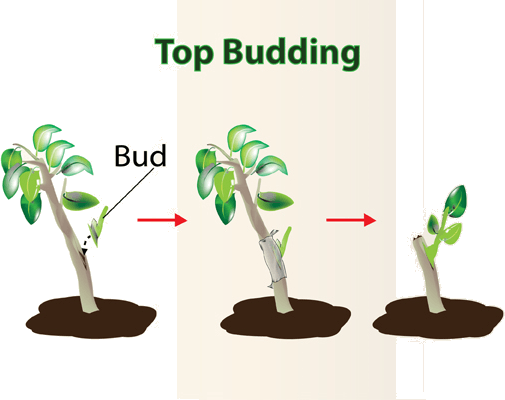
Significance of Artificial Vegetative Propagation
-
- Maintains genetic stability. The plants reproduced are genetically similar to the parent plant and have all its characteristics.
- Plants raised by vegetative propagation can bear flowers and fruits earlier than those produced by seeds.


One Comment on “Vegetative Propagation Class 10”